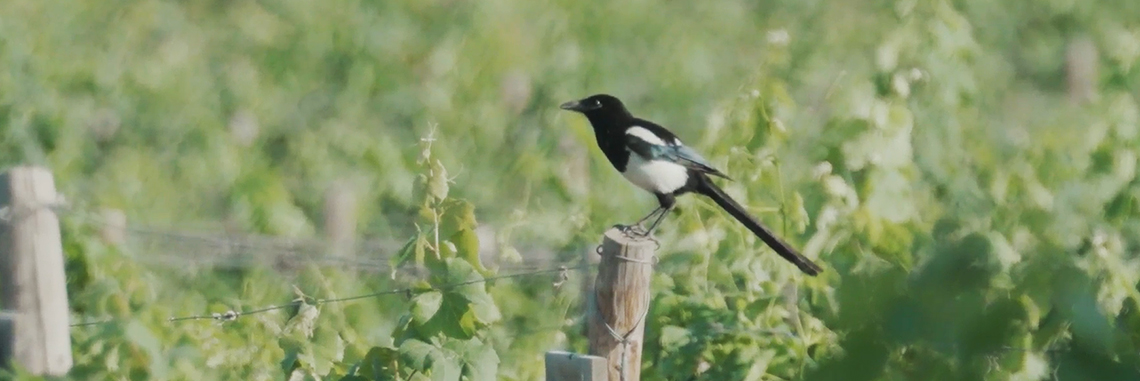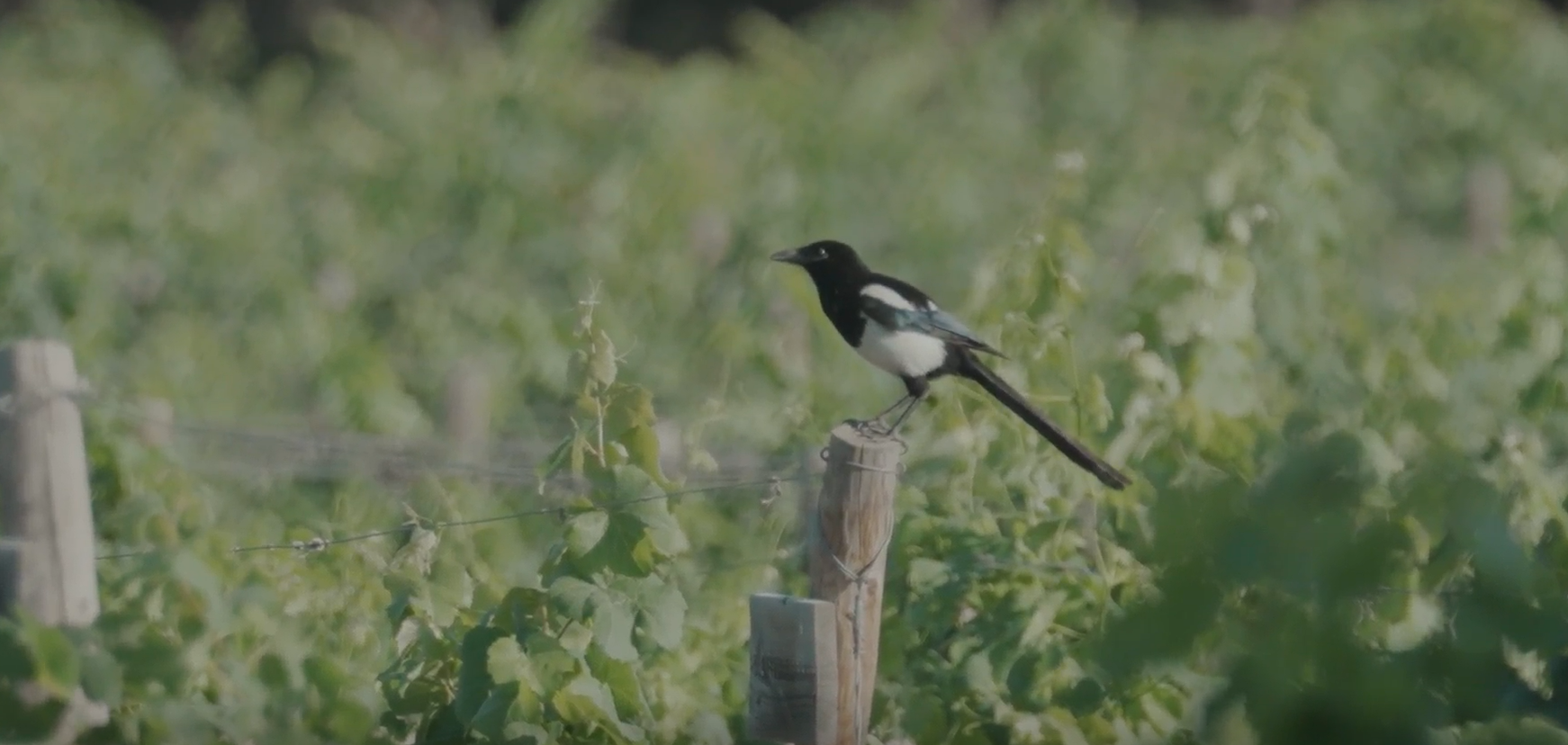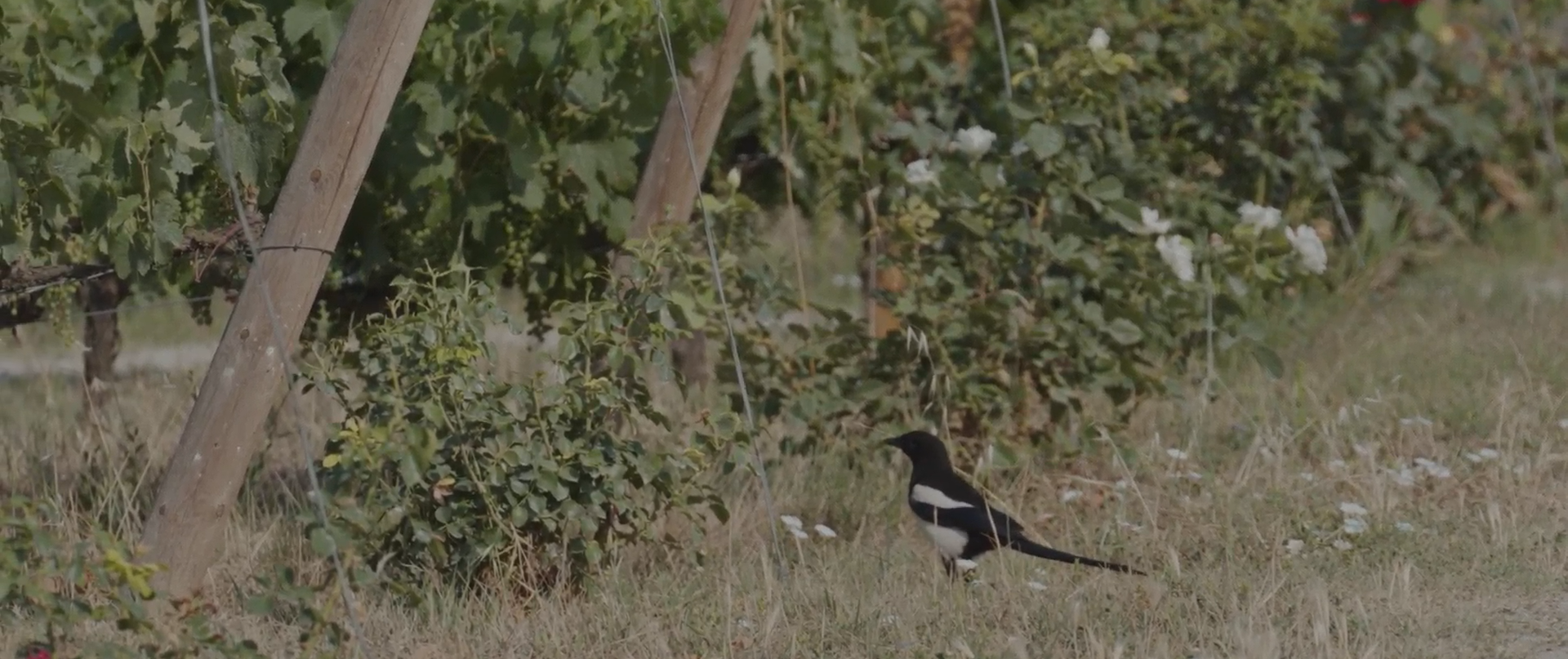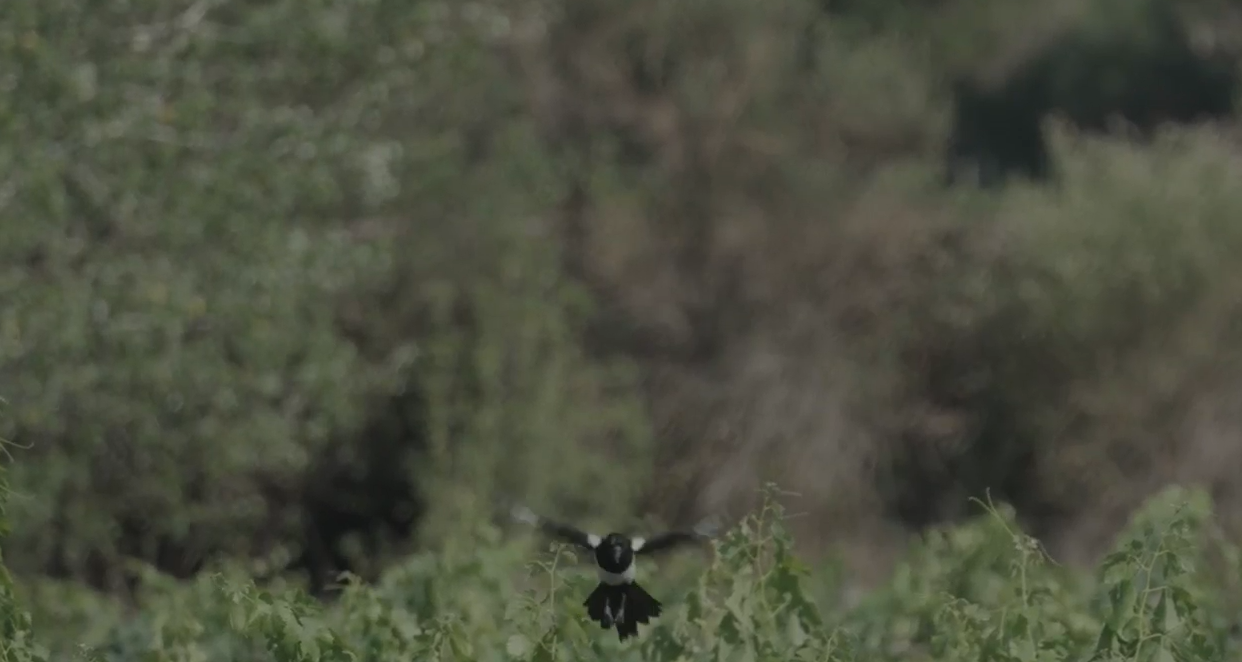The Magpie, Sentries Watching Over the Vineyard

By Jose Luis Gallego, environmental communicator (@ecogallego)
Adaptation is the key to success for one of the most common and ubiquitous birds of our fields and forests: the magpie, which scientists refer to by the curious Latin name Pica pica.
This large-headed, strong-billed corvid is also one of the easiest species to identify thanks to its contrasting plumage, an elegant combination of pure white and jet black. But it is not a dull black: in sunlight, the plumage shimmers shades of brilliant green, gold, and lilac, giving the bird an exotic beauty.

A magpie in a Familia Torres vineyard in the Penedès
Backlit, its long, diamond-shaped tail, which is constantly swaying, is also an instant giveaway. Even if we don’t see it, we can identify the magpie by its unique call: a short, dry raspy chatter, which turns into shrill ascending clicks when it wants to alert its companions of a threat. Imagine the sound of shaking a tin can full of stones. The magpie is 45 centimetres long and can weigh up to a quarter of a kilo.
Abundant and ubiquitous, the magpie inhabits all types of forest ecosystems: from coastal woodlands to high mountain regions. That said, rural areas are its most characteristic environment, the mosaic of cropland, groves, and pastures that reach from the outskirts of villages to the mountains. It is also found in urban environments, even in city centres, making it one of the most common denizens of parks and gardens.

A magpie amid the plant cover of the Familia Torres vineyard in the Penedès
Given its ability to adapt to so many different habitats, the magpie boasts one of the most extensive distribution maps in the avian realm, from North Africa to the Far East, all of Europe and Southeast Asia. In Spain, it is found across practically the entire Iberian Peninsula, although its presence is scarcer in eastern regions and in the Guadalquivir valley. There are no magpie populations on the Balearic and Canary Islands.
An omnivorous scavenger, the magpie will eat a wide variety of foods. From berries and fruits to seeds and tender shoots. It hunts insects of all sizes and captures small rodents and reptiles. Thanks to its powerful bill and sharp talons, it can also prey on other birds. As a result, the overpopulation of magpies must be controlled in some northern parts of the peninsula, because they plunder nests, seizing the chicks or eggs of other birds. This decimates the populations of these birds to the point of endangering their survival. Opportunistic scavengers, magpies also forage in landfills and even rummage through rubbish containers.
A characteristic behaviour of the magpie, and other corvids, is to share surveillance and territorial monitoring tasks to protect the group. In vineyards, for example, a magpie will usually perch high up in a nearby tree while the others feed on grapes and, in the event of a threat, sound the alarm with its powerful call.

A magpie flying over the Familia Torres vineyard in the Penedès
The magpie usually lays a single clutch of around four eggs between March and April. The nest, tucked into the fork of the highest tree branches, is a large, spherical, dome-shaped construction made from twigs, sticks, and mud, along with other materials that attract the magpie’s attention in the fields (it likes shiny things): from rope to pieces of cloth and plastic, which the magpie mixes in with the mud.
Finally, as with other corvids such as the crow, jackdaw, and jay, the magpie has always been regarded as highly intelligent, making it the subject of all kinds of tales and legends. Stories abound about magpies stealing jewels (remember, they are drawn to things that glitter), or of knowing how to open the doors of barns and sheds to snack on the tasty morsels stored inside. Whereas much of that may be hyperbole, one thing is certain: this beautiful bird species is very beneficial for the rural environment and must be respected at all times. It is protected by law, and its capture is forbidden.
